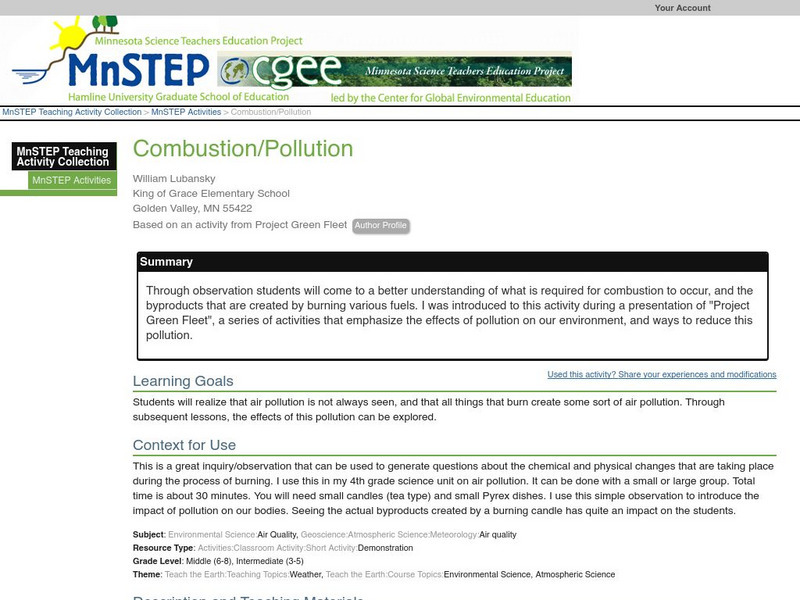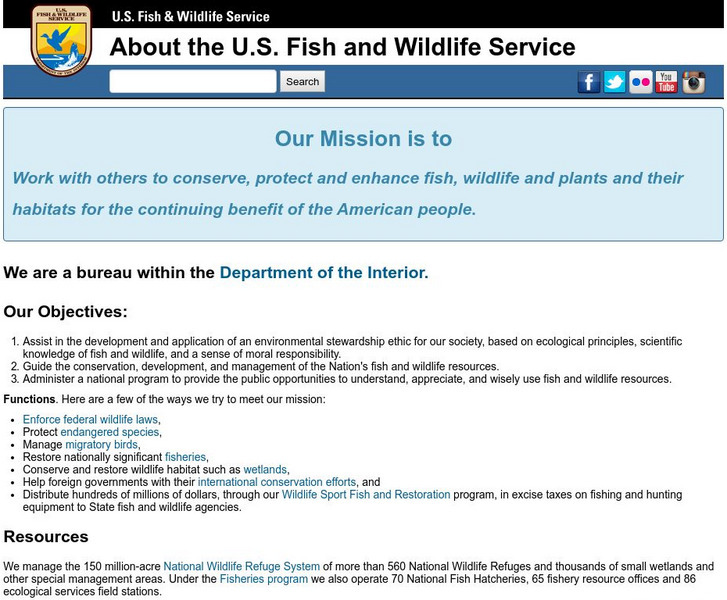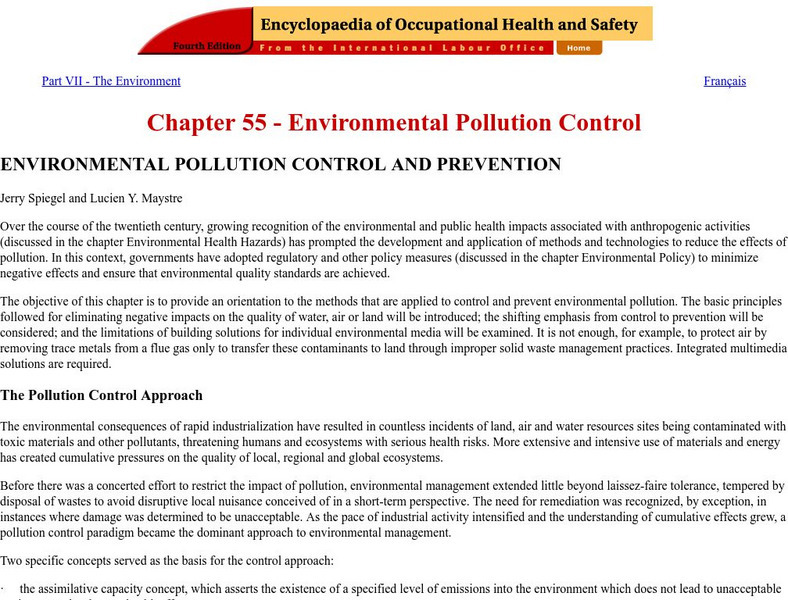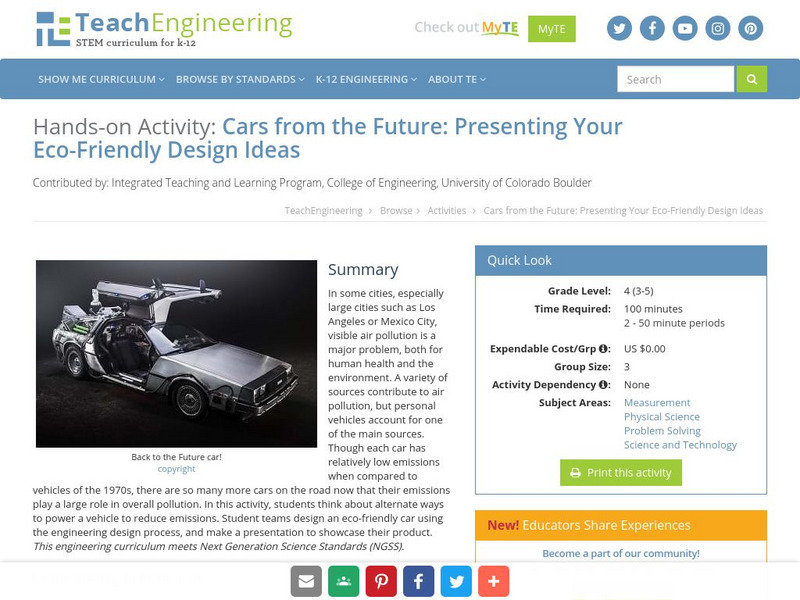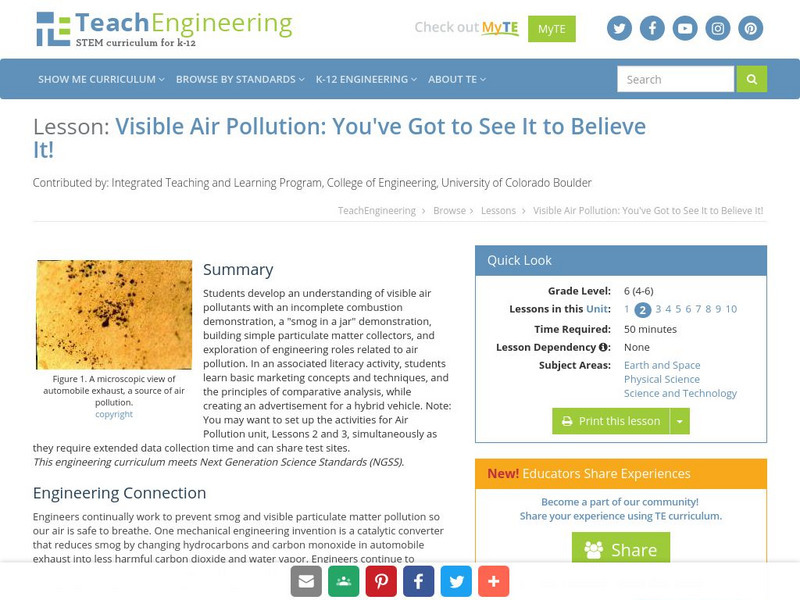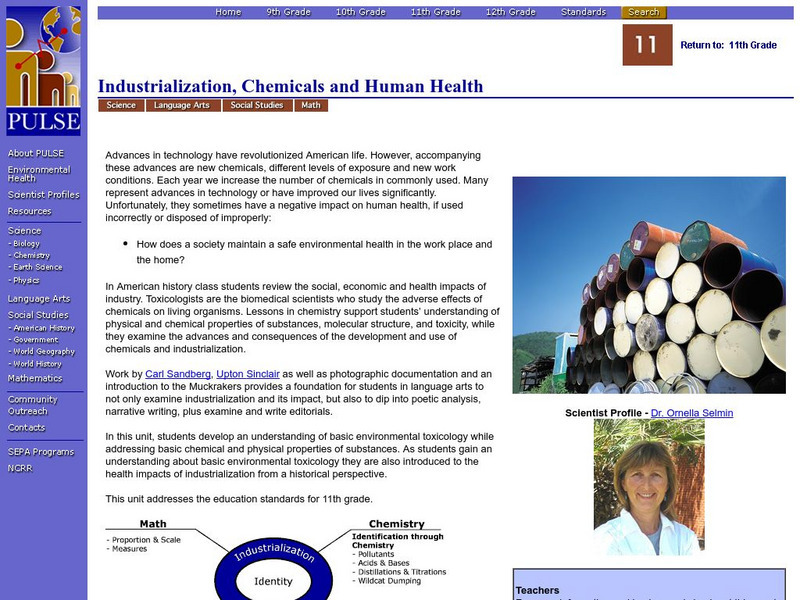Utah Education Network
Uen: If Bugs Could Talk Bugs Don't Bug Me
Evaluate the quality of a "water sample" and form a hypothesis about the land use near the location their "water sample" was collected.
University Corporation for Atmospheric Research
Ucar: Air Quality Teaching Box
This teaching box is filled with educational resources that help students explore the science of, and solutions to, air pollution.
Arizona State University
Arizona State University: Water Survivor Class
Lesson addresses the challenge of supplying clean water during times of a shortage and includes a look at the various water-treatment and filtration processes in place to insure a safe water supply.
US Environmental Protection Agency
Epa: Learn the Issues: Health & Safety
This site provides real-world issues as well as the scientific research and technology used to support the EPA's mission to protect human health and safeguard the natural environment.
Science Education Resource Center at Carleton College
Serc: Investigate Effects of an Oil Spill
This lab is designed so that learners will understand the effects of oil spills on plants, animals, and the environment and investigate clean up methods through a simulated oil spill. They will understand the risks associated with...
Science Education Resource Center at Carleton College
Serc: Combustion/pollution
Through observation students will come to a better understanding of what is required for combustion to occur, and the byproducts that are created by burning various fuels.
Science Education Resource Center at Carleton College
Serc: Danger in the Air
In this learning module, students are involved in an observational study of air pollutants in the atmosphere. The students collect and examine air quality and weather data, looking for correlations between weather and air quality.
US Fish and Wildlife Service
U.s. Fish and Wildlife Service
Outlines the role of the Fish and Wildlife Service in protecting, conserving, and researching the fish and wildlife of the United States. Includes information about the role of DDT and its environmental effects.
PBS
Now With Bill Moyers: Kids and Chemicals: Facts and Laws
Investigate synthetic chemicals that may be found in one's environment, and consider how toxic synthetic chemicals may affect people differently. Reflect on alternatives to toxic home-use products, and evaluate the risks and benefits.
Other
Rockefeller University: The Environment Since 1970
High level discussion of environmental change in a twenty year period. Look for CFC's as you scroll down to the heading "Indicators of the environment."
Other
Encyclopaedia of Occupational Health and Safety: Environmental Pollution Control
This study provides an orientation to the methods that are applied to control and prevent environmental pollution. The basic principles followed for eliminating negative impacts on the quality of water, air or land are discussed.
US Fish and Wildlife Service
Chlorinated Hydrocarbons (Organochlorines) Ddt
Read a brief history of the use of DDT in the United States, its effect on wildlife, and the banning of the toxin in 1972 by the EPA.
TeachEngineering
Teach Engineering: Acid Rain Effects
Students conduct a simple experiment to model and explore the harmful effects of acid rain (vinegar) on living (green leaf and eggshell) and non-living (paper clip) objects.
TeachEngineering
Teach Engineering: Cars From the Future
Students learn about air pollution caused by cars and what engineers are doing to try to help with the problem. Students then design their own environmentally friendly car and give a presentation to experience how engineers have to be...
TeachEngineering
Teach Engineering: You've Got to See It to Believe It!
Students develop an understanding of visible air pollutants with an incomplete combustion demonstration, a "smog in a jar" demonstration, building simple particulate matter collectors, and exploration of engineering roles related to air...
TeachEngineering
Teach Engineering: I Don't Believe My Eyes!
Students develop their understanding of the effects of invisible air pollutants with a rubber band air test, a bean plant experiment and by exploring engineering roles related to air pollution. In an associated literacy activity,...
TeachEngineering
Teach Engineering: Who's Down the Well?
Drinking water comes from many different sources, including surface water and groundwater. Environmental engineers analyze the physical properties of groundwater to predict how and where surface contaminants will travel. In this lesson,...
CK-12 Foundation
Ck 12: Earth Science: Effects of Air Pollution on the Environment
[Free Registration/Login may be required to access all resource tools.] How pollution damages the environment.
American Geosciences Institute
American Geosciences Institute: How Does Water Become Polluted?
Find out how Earth's water supply can become contaminated with pollutants.
University of Arizona
Pulse: Industrialization, Chemicals and Human Health
While students gain an understand of basic environmental toxicology, they explore the health impacts of industrialization on society in these lessons. This is a cross curricular unit that addresses standards for eleventh grade in math,...
Other
Center for Clean Air Policy
Homepage of a nonprofit think tank dedicated to climate and air quality policy issues.
TeachEngineering
Teach Engineering: The Search for Secret Agents
Students embark on a scavenger hunt around the school looking for indoor air pollution and mapping source locations.
John Wiley & Sons
John Wiley & Sons: Water Pollution & Treatment
Resource provides information on environmental issues of water pollution with an established learning objective. A case study about the Illinois River is provided explaining the environmental impact of water pollution. Environmental...
CK-12 Foundation
Ck 12: Earth Science: Effects of Air Pollution on the Environment
[Free Registration/Login may be required to access all resource tools.] How pollution damages the environment.






